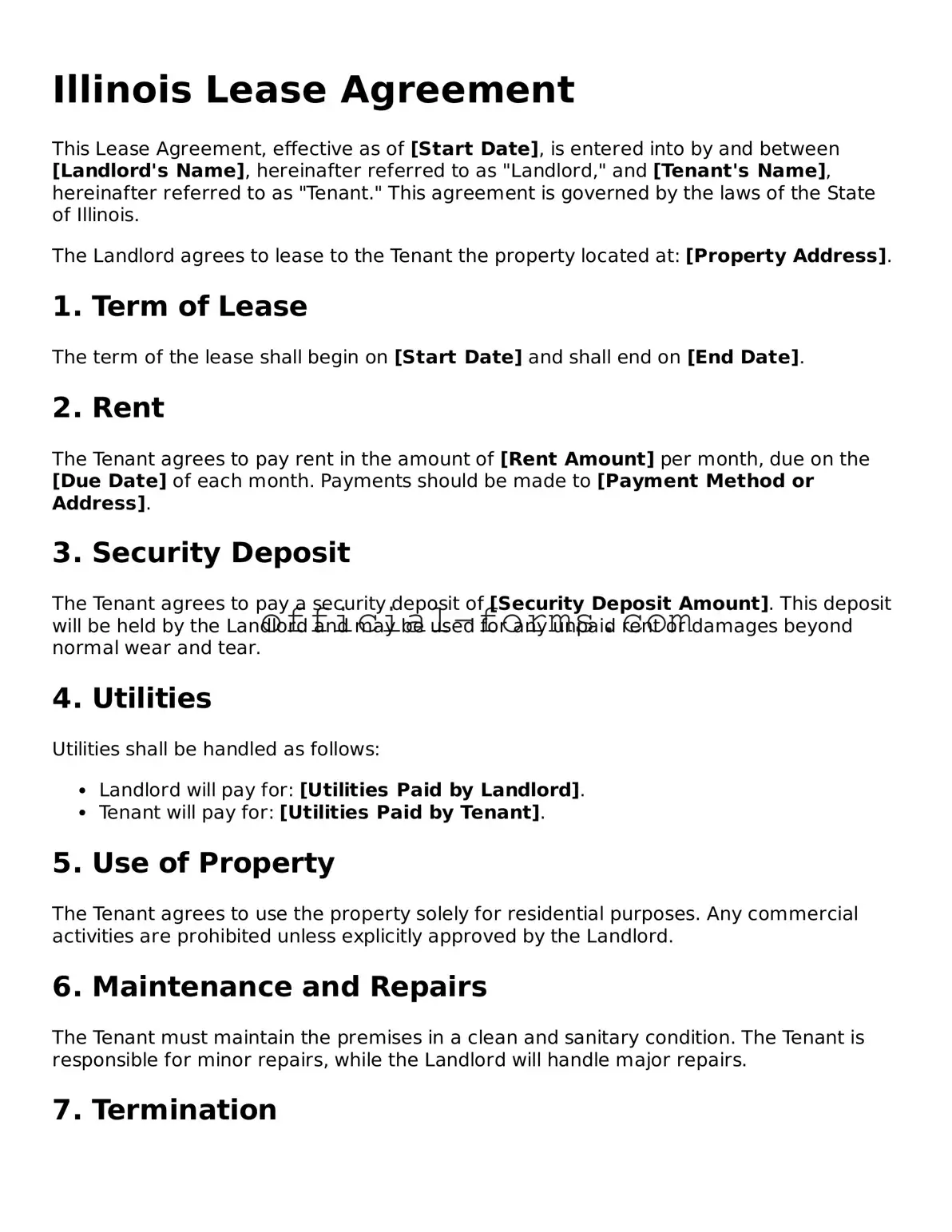Official Illinois Lease Agreement Document
The Illinois Lease Agreement form is a legal document that outlines the terms and conditions between a landlord and a tenant for renting a property. This form serves as a crucial tool to protect the rights and responsibilities of both parties involved in the rental process. Understanding its components can help ensure a smooth leasing experience.
Open My Lease Agreement Now
